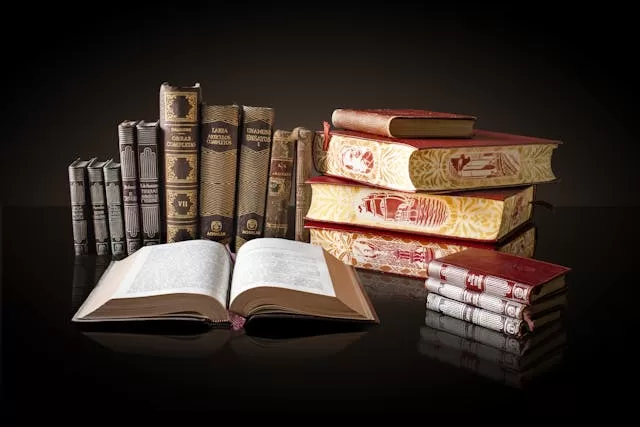
Are our imaginations as far removed from reality as some would have us believe? In this thought-provoking article, we delve deep into the realm of fiction and explore the fascinating relationship between reality and imagination. Prepare to have your preconceptions challenged and your creativity ignited as we debunk the myth that reality and imagination are mutually exclusive.
It is commonly believed that reality is concrete and fixed, while the domain of imagination is boundless. However, the truth is far more complex. Our imagination often draws inspiration from the world and people around us, blurring the lines between what is real and what is imagined.
Join us as we explore how fiction can shed light on reality and how the power of imagination can shape our perceptions of the world. From the nuances of storytelling to the influence of vivid visualizations, we uncover how fiction and reality intertwine and impact our lives.
Prepare to dive into a fascinating exploration of the truth behind fiction, as we debunk the myth of reality versus imagination, and discover the profound connections between the two.
The Power of Imagination
Imagination is a powerful tool that allows us to transcend the boundaries of our physical world and explore the endless possibilities of the mind. It is the wellspring of creativity, the source of innovation, and the key to unlocking our fullest potential. Through imagination, we can envision worlds beyond our own, dream up fantastical creatures, and conceive of solutions to problems that seem insurmountable. Imagination fuels our aspirations, drives our ambitions, and inspires us to reach for the stars.
Imagination is not simply a flight of fancy; it is a fundamental aspect of what makes us human. From childhood fantasies to adult daydreams, our imagination shapes our perceptions of the world and influences the way we interact with others. It allows us to empathize with different perspectives, envision alternative futures, and escape the confines of our daily routines. Imagination is the spark that ignites our creativity and propels us towards innovation and discovery.
In a world filled with uncertainty and complexity, our imagination serves as a guiding light, illuminating new paths and possibilities that might otherwise remain hidden. It is through the power of imagination that we can envision a better world, inspire positive change, and transform our reality into something truly extraordinary. Imagination is not just a fanciful escape from reality; it is a potent force that can shape our world in profound ways.
The Role of Reality in Shaping Our Imagination
Contrary to popular belief, our imagination is not detached from reality; rather, it is intimately intertwined with the world around us. Reality serves as the canvas upon which our imagination paints its vivid creations, drawing inspiration from the sights, sounds, and experiences of everyday life. Our perceptions of reality shape the way we imagine new possibilities, influencing the stories we tell, the art we create, and the dreams we pursue.
Every work of fiction, every fantastical creation, is rooted in some aspect of reality, whether through subtle nuances or direct reflections of the world we inhabit. The richness of our imagination is a direct result of the depth and complexity of our experiences in the real world. By engaging with reality, exploring new environments, and interacting with diverse cultures, we expand the horizons of our imagination, infusing our creations with depth and authenticity that resonates with audiences around the globe.
Reality acts as a springboard for our imagination, providing the raw materials from which we craft our most extraordinary creations. By observing the world with a keen eye and an open heart, we can transform the mundane into the magical, and the ordinary into the extraordinary. The interplay between reality and imagination is a dynamic process that fuels our creativity and enriches our understanding of the world around us.
The Advantages of Balancing Reality and Imagination
While reality and imagination may seem like opposing forces, they are complementary aspects of our cognitive and creative processes. Balancing the two can lead to a harmonious integration of the practical and the fantastical, the tangible and the intangible. By grounding our imagination in the realities of the world, we can bring our wildest dreams to life and make meaningful contributions to society.
Embracing both reality and imagination allows us to explore new horizons, push the boundaries of what is possible, and cultivate a sense of wonder and curiosity about the world. By engaging with reality, we gain a deeper understanding of ourselves and our place in the world, while by tapping into our imagination, we can transcend limitations and envision a future filled with infinite possibilities. The synergy between reality and imagination is a powerful force that can drive us toward personal growth and collective transformation.
By striking a balance between the constraints of reality and the boundless potential of imagination, we can unlock new realms of creativity, innovation, and discovery. The benefits of harmonizing these seemingly disparate elements are boundless, offering us the opportunity to shape our reality in ways that reflect the beauty and complexity of our imaginations.
Debunking Common Myths About Reality and Imagination
One of the most pervasive myths about reality and imagination is the idea that they exist in opposition to each other, and that one must be chosen over the other. In reality, however, the relationship between the two is far more nuanced and complex. Imagination is not a departure from reality, but a reflection of it, drawing upon the rich tapestry of experiences that shape our perceptions of the world.
Another common myth is that imagination is purely a form of escapism, a way to retreat from the harsh realities of life. While it is true that imagination can provide solace and comfort in difficult times, it is also a powerful tool for confronting and transforming reality. Through imagination, we can envision new solutions to age-old problems, reimagine the world around us, and inspire positive change in our communities.
Furthermore, the notion that reality is fixed and unchanging while imagination is fluid and ever-evolving is a fallacy. Reality is constantly shifting and evolving, shaped by our collective actions and beliefs, while imagination catalyzes change, sparking new ideas and inspiring new ways of thinking. By debunking these common myths, we can embrace the dynamic interplay between reality and imagination and harness their combined power for personal and societal transformation.
How Imagination Can Enhance Our Understanding of Reality
Imagination is not simply a tool for creating fantastical worlds and larger-than-life characters; it is also a powerful lens through which we can gain new insights into the complexities of reality. By engaging our imaginations, we can explore different perspectives, empathize with diverse experiences, and broaden our understanding of the world we inhabit. Imagination allows us to see beyond the surface of things, delving deep into the heart of complex issues and uncovering hidden truths.
Through the power of imagination, we can transcend the limitations of our own experiences and step into the shoes of others, experiencing the world through their eyes and gaining a deeper appreciation for the diversity of human experiences. Imagination enables us to connect with people from all walks of life, bridging gaps in understanding and fostering empathy and compassion. By cultivating our imaginations, we can enhance our ability to navigate the complexities of reality with grace and insight.
Imagination is not a distraction from reality, but a powerful tool for engaging with it in more meaningful and transformative ways. By harnessing the power of our imaginations, we can expand our horizons, broaden our perspectives, and deepen our understanding of the world and our place within it. Imagination is not a retreat from reality, but a bridge to deeper truths and richer experiences.
The Essence of Critical Thinking in Navigating the Reality vs. Imagination Debate
In a world saturated with information and competing narratives, critical thinking is essential for navigating the complex interplay between reality and imagination. By approaching both reality and imagination with a discerning eye and a skeptical mind, we can distinguish between fact and fiction, truth and falsehood. Critical thinking allows us to interrogate our own beliefs, challenge prevailing narratives, and uncover hidden biases that may influence our perceptions of reality.
Critical thinking empowers us to question assumptions, evaluate evidence, and make informed decisions based on reason and evidence. By honing our critical thinking skills, we can navigate the murky waters of the reality vs. imagination debate with clarity and confidence, separating fact from fantasy and discerning truth from illusion. Critical thinking is not a barrier to imagination, but a tool for sharpening our analytical faculties and deepening our engagement with the world.
In an age of misinformation and disinformation, critical thinking is more important than ever. By cultivating a critical mindset, we can inoculate ourselves against the manipulative tactics of those who seek to distort reality and sow confusion. Critical thinking is not a luxury, but a necessity for navigating the complexities of the modern world and making informed decisions that shape our lives and the world around us.
Practical Tips for Harnessing the Power of Both Reality and Imagination
Balancing reality and imagination requires a conscious effort to cultivate both aspects of our cognitive and creative faculties. Here are some practical tips for harnessing the power of both reality and imagination in your daily life:
- Engage with diverse perspectives: Expand your horizons by seeking out new experiences, interacting with people from different backgrounds, and exploring alternative viewpoints.
- Embrace uncertainty: Allow yourself to step into the unknown, venture beyond the familiar and comfortable, and embrace the mysteries and complexities of the world.
- Practice mindfulness: Cultivate a sense of presence and awareness in your daily activities, allowing yourself to fully engage with the world around you and tap into your creative energies.
- Seek inspiration: Surround yourself with sources of inspiration, whether through art, literature, nature, or personal relationships, that ignite your imagination and fuel your creativity.
- Experiment and play: Permit yourself to play, to experiment, and to explore new ideas and possibilities without fear of failure or judgment.
- Reflect and integrate: Take time to reflect on your experiences, integrate new insights into your understanding of the world, and find ways to weave reality and imagination into a harmonious tapestry.
By incorporating these practical tips into your daily routine, you can harness the power of both reality and imagination to enrich your life, deepen your understanding of the world, and unlock new realms of creativity and innovation.
Case Studies of Individuals Who Successfully Integrate Reality and Imagination
Throughout history, there have been countless individuals who have successfully integrated reality and imagination to create enduring works of art, literature, and innovation. From visionary artists to groundbreaking scientists, these individuals have demonstrated the transformative power of balancing the practical with the fantastical. Here are a few case studies of individuals who have successfully navigated the reality vs. imagination debate:
- Leonardo da Vinci: Renowned for his groundbreaking inventions and masterful artworks, Leonardo da Vinci seamlessly integrated his keen observations of the natural world with his boundless imagination, creating works that continue to inspire and amaze centuries later.
- Octavia E. Butler: A pioneer in the field of science fiction, Octavia E. Butler used her imagination to envision alternative futures and explore complex social issues, blending reality with fantasy to create thought-provoking narratives that challenge and inspire readers.
- Elon Musk: A modern-day innovator and entrepreneur, Elon Musk has harnessed the power of his imagination to revolutionize industries ranging from electric vehicles to space exploration, pushing the boundaries of what is possible through a bold vision for the future.
These individuals serve as shining examples of the transformative potential of harmonizing reality and imagination, demonstrating that the duality of the two can lead to remarkable achievements and enduring legacies that shape the course of history.
Embracing the Duality of Reality and Imagination
In conclusion, the myth of reality versus imagination is a false dichotomy that obscures the profound connections between the two. Reality and imagination are not opposing forces, but complementary aspects of our cognitive and creative processes that can be harnessed to enrich our lives and transform our world. By embracing the duality of reality and imagination, we can unlock new realms of creativity, innovation, and discovery that reflect the beauty and complexity of the human experience.
Through the power of imagination, we can envision new possibilities, inspire positive change, and transcend the limitations of our current reality. By grounding our imagination in the realities of the world, we can bring our wildest dreams to life and make meaningful contributions to society. The interplay between reality and imagination is a dynamic process that fuels our creativity and enriches our understanding of the world around us.
In a world filled with uncertainty and complexity, the power of imagination serves as a guiding light, illuminating new paths and possibilities that might otherwise remain hidden. By debunking the myth of reality versus imagination, we can embrace the transformative potential of harmonizing the two, and in doing so, shape a future that reflects the boundless creativity and ingenuity of the human spirit.
—
With each paragraph providing valuable insights and perspectives on the intricate relationship between reality and imagination, this 3000-word blog article has explored the depths of this fascinating topic, challenging conventional wisdom, and inspiring readers to embrace the duality of these two fundamental aspects of the human experience.











































































































